Cosmos Airdrop Strategies 2024: Which Coins Should You Stake & Why?

Having focused on building and developing projects during the bear market, developers are now positioned to distribute airdrops ahead of the bull market, aiming to attract users. Cosmos is one of the ecosystems expected to offer many airdrop opportunities in the next few months due to the numerous promising projects within it. Curious about how to secure an airdrop within the Cosmos ecosystem? Check out the full details in the following article.
Article Summary
- 💸 The early period of the bull market is ideal for airdrop hunting. Cosmos and its ecosystem are sharing airdrops.
- 💪 With more airdrop hunters, projects are becoming more selective. This requires users to show consistency, be more active, and commit capital.
- 🪂 After Sei Network, Celestia, and Dymension, several projects in the Cosmos ecosystem are rumored to be dropping airdrops. These include Berachain, Black Panther, Talis Network, and Milkyway.
- 📝 To increase the chances of getting airdrops from the Cosmos ecosystem, users can stake and transact on the protocol platform and complete quests in Zealy or Galxe.
About Airdrops and How to Get Them
An airdrop is an event where a crypto project distributes its assets to loyal users and community members. To be eligible for an airdrop, certain requirements must be met, and as the interest in airdrops, especially from larger projects, increases, crypto users find themselves in competition with one another.
There are at least two main requirements to increase the chances of getting an airdrop: capital and consistency. With so many airdrop hunters, the developers will select recipients based on a certain amount of capital. For example, to get an airdrop from Project A, users must stake 25 XYZ tokens.
Meanwhile, consistency refers to how long users have been actively developing the project. For example, users must have been actively involved in the B network for two months to get an airdrop from Project B. In addition, the more capital and the longer the consistency, the greater the airdrop allocation that can be obtained.
Find out more about airdrops in the following article.
Cosmos Ecosystem Airdrops
Even if you’re not particularly bullish on Cosmos’ native token, ATOM, paying attention to the entire ecosystem doesn’t hurt. In fact, some of the best-performing tokens throughout 2023 were created on top of the Cosmos network.
In addition, some of the new protocols in the Cosmos ecosystem have also distributed airdrops that the crypto community has anticipated. In late 2023 and early 2024, at least three major airdrops came from the Cosmos ecosystem: Sei Network, Celestia, and Dymension.
Many believe that the airdrop phase in the Cosmos ecosystem is still in its early stages. Therefore, they anticipate that there will be more airdrops from the Cosmos ecosystem in the future. Here are some Cosmos protocols with the potential to distribute airdrops.
Several Protocols with Airdrop Potential on Cosmos
1. Berachain
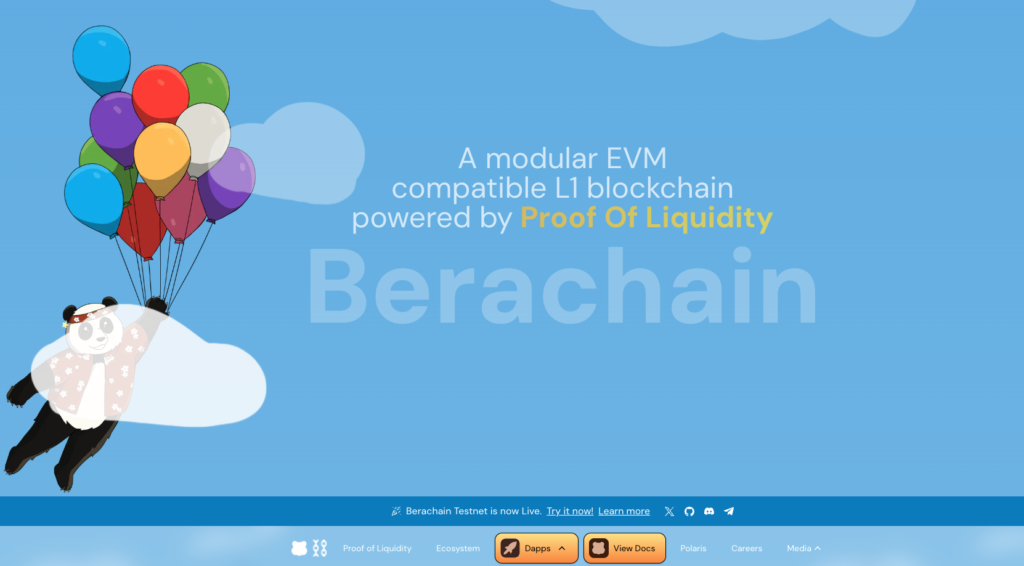
Berachain is a Layer-1 (L1) compatible EVM built using the Cosmos SDK and the Polaris framework. It has a Proof of Liquidity consensus mechanism. Thanks to the combination of the two, Berachain is considered one of the potential protocols.
Berachain carries the Tri-Token model as a solution to overcome the problems that often occur in PoS chains. In the Tri-Token model, Berachain has three kinds of tokens, namely BERA (network token), BGT (governance token), and HONEY (native stablecoin pegged to 1 USDC).
Berachain is currently setting up the mainnet. There are already several native and non-native projects looking to launch on Berachain. In addition, Berachain will have an in-house DEX, perpetual exchange, lending market, etc. You can try all these features through the recently launched Berachain Artio Testnet.
2. Injective Protocol
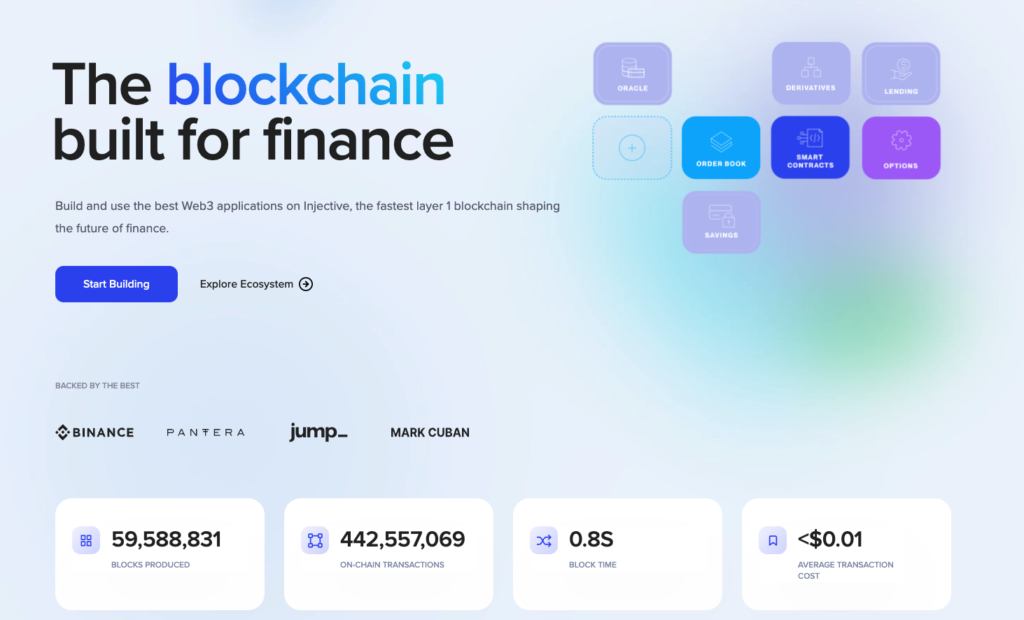
Injective Protocol is a blockchain created to build dApps, especially those engaged in financial products such as cross-chain derivatives trading on several L1 networks such as Cosmos, Ethereum, and other blockchains.
Injective’s advantages include DeFi optimization, interoperability, creation of dApps using CosmWasm, and tokens compatible with Ethereum and IBC. It is predicted to be one of the top-performing L1s in the future.
As the Injective ecosystem grows, various new projects are expected to distribute airdrops for INJ stakes. At least two protocols have been confirmed, namely the Black Panther and Talis Protocol.
Pintu Academy has prepared an article that discusses Injective in depth here.
3. Celestia
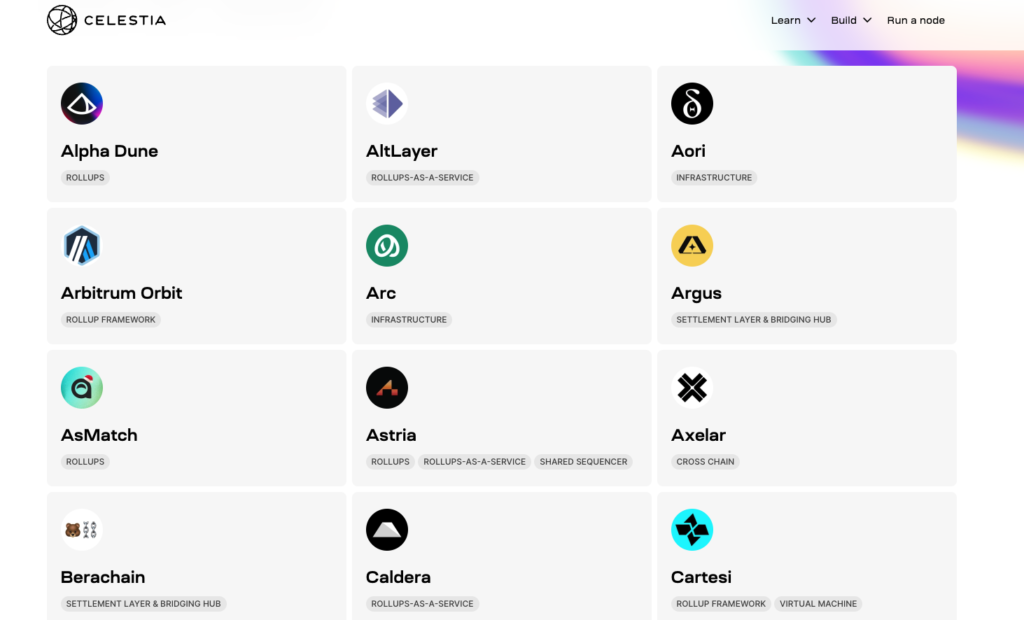
Celestia is the first blockchain to feature a modular architecture. With a modular architecture, Celestia can overcome scalability issues while maintaining a network’s decentralization and security aspects. The modular blockchain narrative is predicted to be one of the main narratives in the upcoming bull run.
Although a new protocol, Celestia’s data availability technology has caught the attention of many developer teams. Both new and existing protocols have adapted their technology. Making the Celestia ecosystem grow rapidly. This is what solidifies the argument that there will be many airdrops coming from the Celestia ecosystem.
Dymension is one of the major protocols from the Celestia ecosystem that has made an airdrop. However, many other protocols, such as MilkyWay, Caldera, and Astria, are predicted to follow the same step.
Want to know more about Celestia and its ecosystem? Find out in this article.
4. Kujira
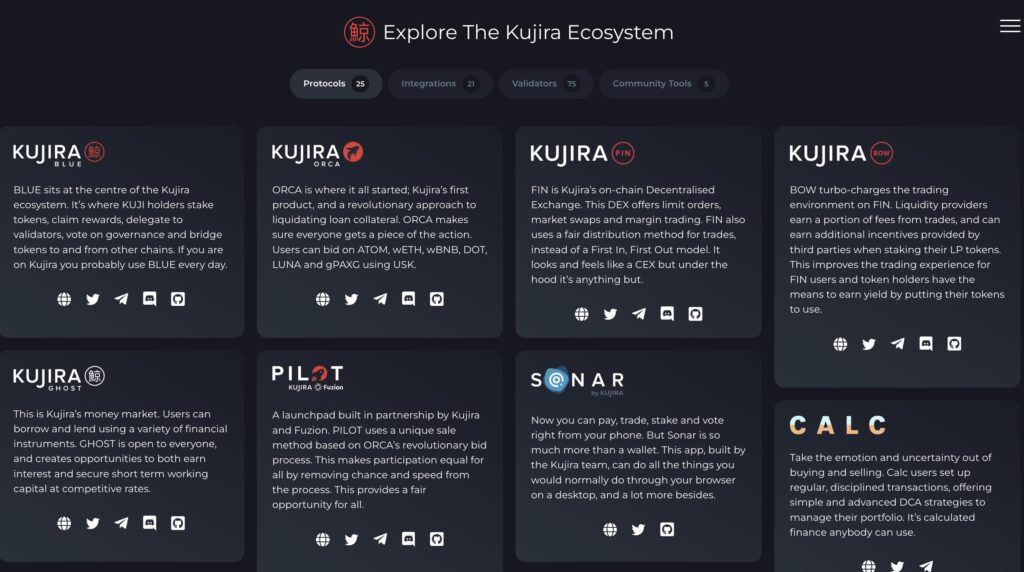
Kujira is a layer 1 blockchain built on the Cosmos network to facilitate decentralized financial activities. Kujira provides features including Native Token Generation, On-Chain Scheduler, semi-permissioned blockchain, and Kujira independent oracles to make it easier for developers and users to transact in the Kujira ecosystem.
It has a different approach from other protocols. They stake all their revenue from applications in its ecosystem to the KUJI staking system. It shows Kujira’s confidence in its products as the Kujira network operations depend on the income from all its products.
Kujira is one of the dark horses in the Cosmos ecosystem. With many protocols developed in its ecosystem, Kujira is predicted to be one of the protocols that will distribute airdrops.
Here’s a more complete explanation of Kujira and how it works.
Airdrops Strategies on Cosmos Ecosystem
1. Berachain Airdrop Strategy
To increase your chances of getting an airdrop from Berachain, you can do a few things. The easiest way is to collect BongBearsNFT. This is because there are rumors that 5% of the BERA supply will be distributed to BongBearsNFT NFT holders.
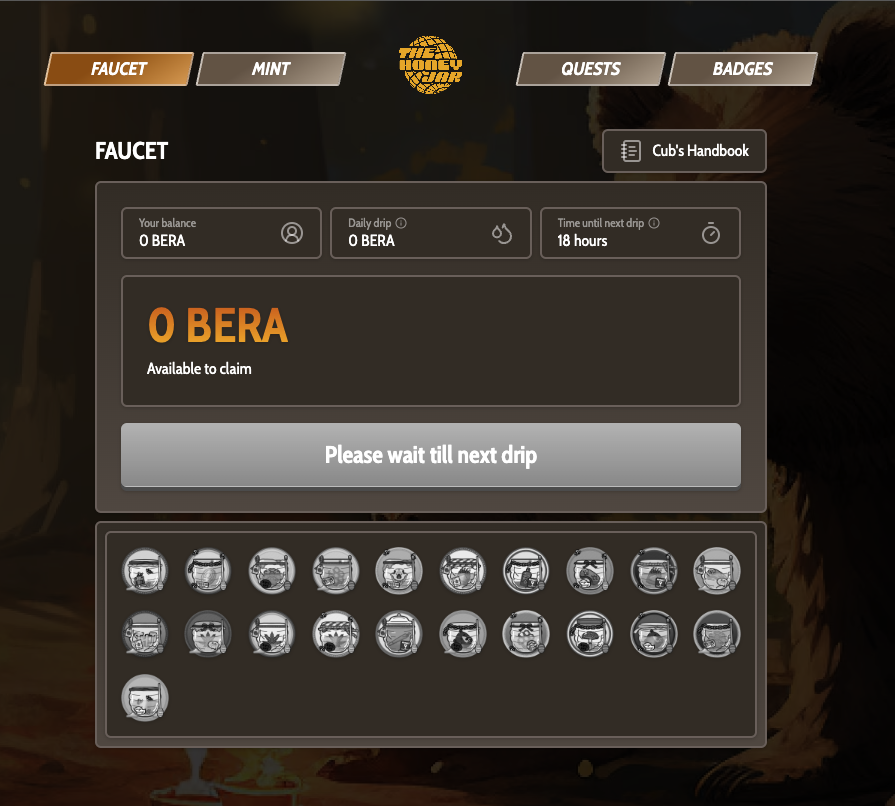
Another NFT collection that allows you to get BERA airdrops is Honeycomb NFTs. You can get them through Honey Jar, a community-based project that acts as a “call option” on Berachain. Beradrome, a ve(3,3) DEX, has worked with several Berachain projects. They also have a collection of NFTs that can allow their owners to get BERA airdrops.
Another way to unlock BERA airdrops is by following and completing quests in Galxe or Zealy Berachain. Don’t forget to try to use Berachain’s testnet.
Another strategy that can be tried is to deploy smart contracts on Berachain. Relax, for those who don't understand coding, @cryptoaioli has created a guide thread to deploy smart contracts using the Thirdweb app.
2. Injective Protocol Airdrop Strategy
If you want to get a chance to grab the airdrop tokens in the Injective ecosystem, then you must stake INJ tokens. The following is a general guide to staking INJ:
- Create a crypto wallet that supports the Cosmos. You can use Keplr or Leap Wallet. In this case, we will use Keplr.
- Buy INJ tokens through Pintu and then send it to your Keplr address.
- Once the tokens are received, open the Keplr dashboard and tap the “Stake” menu. On the menu, there will be various chains displayed. Select the Injective Protocol chain
- Next, choose a validator that you trust. A little tip: Choose a validator outside the top 20, not a CEX, to ensure you are eligible for the airdrop.
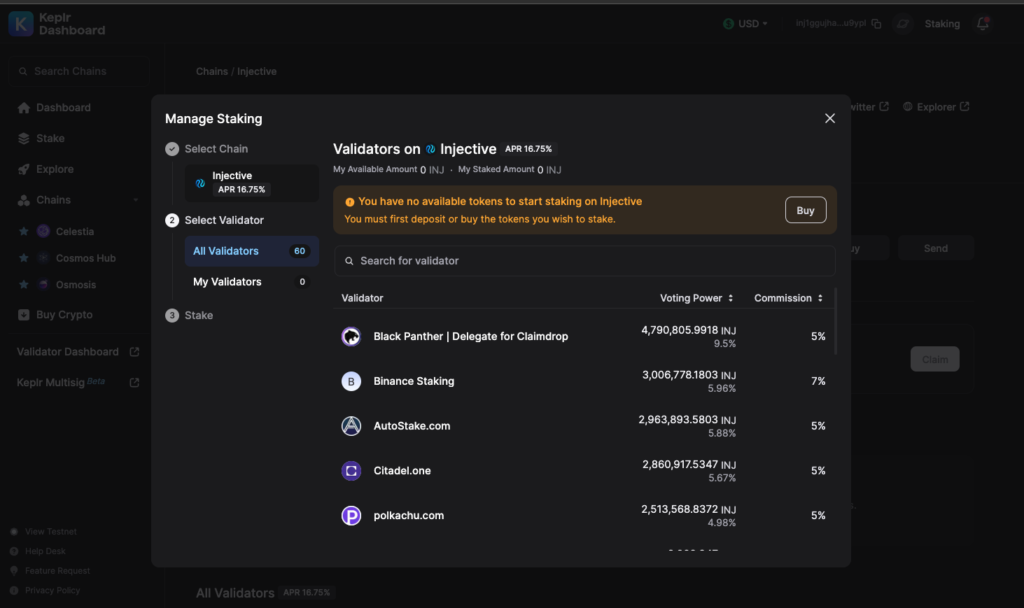
After these four steps, some protocols in the Injective ecosystem have additional requirements. Each protocol can have different requirements.
- On Black Panther, a Liquid Staking Derivative (LSD) platform for Injective, you must select a Black Panther validator. After that, users must deposit their vaults to meet the criteria for getting BLACK airdrops.
- Meanwhile, with Talis Protocol, the largest NFT marketplace on Injective, you must select Talis Protocol as your validator. Then, users must have a collection of popular NFTs from Talis Protocol and trade NFTs on their platform. Later, selected users will get a TALIS airdrop.
- Although there is no official confirmation, Helix Apps, a DEX that offers perpetual trading and swaps without gas fees on Injective, is also rumored to be handing out airdrops. An indication of this is the “rewards” tab on their website. Performing swaps and perpetual trading, as well as using Helix’s bots, are thought to be the requirements to get the airdrop.
3. Celestia Airdrop Strategy
The Celestia ecosystem has proven to be one of the most prospective places for airdrop hunting. Users only need to stake their TIA tokens to be able to get airdrops from projects in the Celestia ecosystem. Recently, Dymension and Altlayer have distributed airdrops to TIA stakers.
How to stake TIA is not much different from the INJ staking steps mentioned above. Select the Celestia chain instead of Injective on your Keplr dashboard. Then select a validator, and voila, you’ve successfully staked your TIA tokens and opened up the opportunity to get an airdrop.
Given that Celestia is a new protocol and the ecosystem is still growing, it is predicted that many projects will share their airdrops in the future. Milkyway, the liquid staking protocol for Celestia in its documentation page, has confirmed that it will issue MILK tokens. Here are the steps you can take to be selected for the MILK airdrop:
- Buy TIA tokens and send them to your Keplr address.
- Connect your Keplr to the Milkyway app.
- Then stake TIA tokens to get MilkTIA tokens. It is recommended to stake at least 5 TIA.
- Use the MilkTIA tokens earned to become a liquidity provider on Osmosis.
- In the Osmosis app, select the Pools menu and deposit MilkTIA tokens into the MilkTIA/TIA.
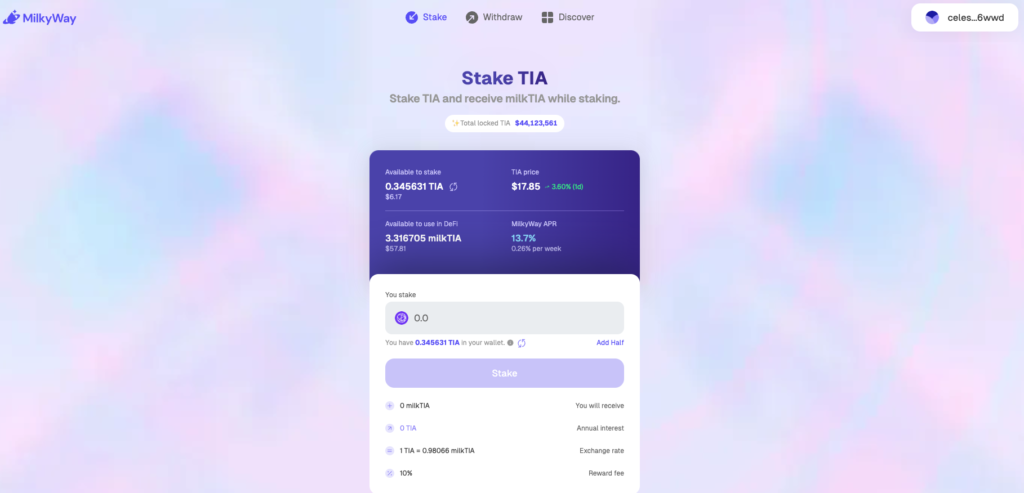
The more assets you stake, the greater the chance of being eligible to receive airdrops. By staking TIA, you will open up opportunities to get airdrops from projects that use TIA or the Cosmos network.
4. Kujira Airdrop Strategy
Here are the steps you should take if you want to stake KUJI:
- Unlike TIA or INJ, which are sold on most CEXs, KUJI is currently not listed on major CEXs. To get it, you can swap Osmosis.
- Buy tokens supported by the Cosmos network, such as OSMO. Then send the tokens to your Keplr address.
- Open the Osmosis app and connect your wallet to swap your assets.
- select OSMO tokens to swap with KUJI tokens on the swap menu. Ensure you have OSMO tokens left over to pay the gas fee.
- After getting KUJI, go to the Kujira website and select the Kujira app for staking, Blue by Kujira.
- After entering the staking amount, you must select a validator first. Use the same format as selecting the Celestia validator.
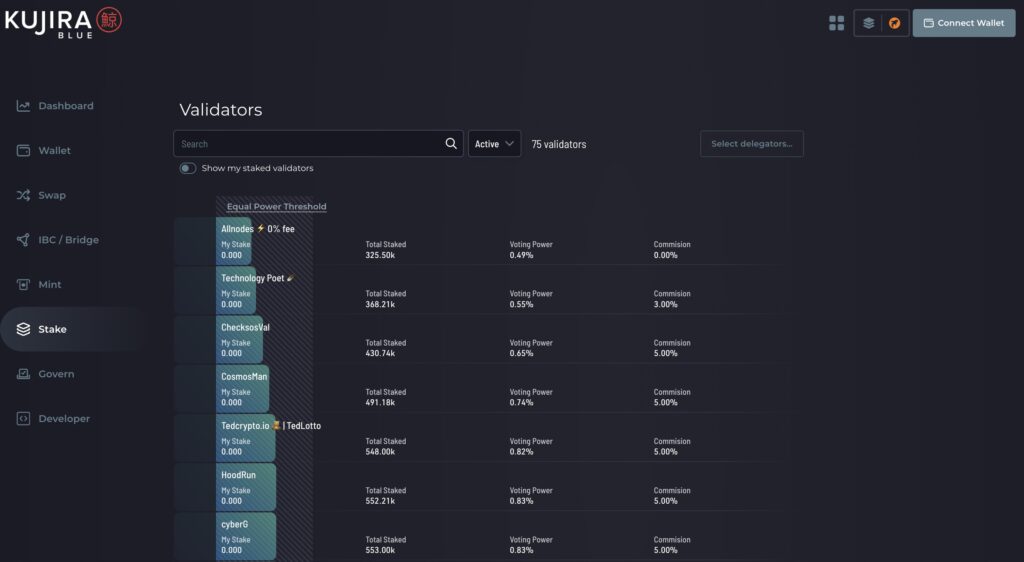
Unlike Celestia or Injective, airdrops in Kujira will be directly distributed to each stakers wallet. You only need to claim the staking rewards, and the airdrop will be sent automatically.
In addition to the Cosmos ecosystem, the Solana ecosystem is also predicted to distribute a lot of airdrops. Find out how to get it here.
Final Thought
Airdrops are a way for developers to thank their community. Many users jump at the chance to get tokens for free. However, always do your research before claiming an airdrop, especially for new projects. If you’re careless, there’s a chance the link you click could end up being a wallet drainer.
The Cosmos ecosystem has been among the most active in distributing airdrops lately. Many believe this is just the beginning and will continue. Major protocols such as Injective, Celestia, Kujira, and Berachain are in the spotlight for potentially giving airdrops. To increase the chance of getting an airdrop, users must increase their capital, be more active, and be involved in these projects.
How to Buy ATOM Token on Pintu
You can start investing in ATOM by buying it on Pintu app. Here is how to buy crypto on Pintu application:
- Create a Pintu account and follow the process of verifying your identity to start trading.
- On the homepage, click the deposit button and top up the Pintu balance using your preferred payment method.
- Go to the market page and look for ATOM.
- Click buy and fill in the amount you want.
- Now you have ATOM!
In addition to ATOM, you can safely and conveniently purchase a wide range of cryptocurrencies such as TIA, INJ, BTC, and others safely and easily on Pintu. Pintu diligently evaluates all its crypto assets, highlighting the significance of being cautious.
Pintu is also compatible with popular wallets such as Metamask to facilitate your transactions. Download Pintu app on Play Store and App Store! Your security is guaranteed because Pintu is regulated and supervised by Bappebti and Kominfo.
Aside from buying and trading crypto assets, you can expand your knowledge about cryptocurrencies through various Pintu Academy articles. Updated weekly, all Pintu Academy articles are made for knowledge and educational purposes, not as financial advice.
References
- Alex Wacy, Cosmos Ecosystem Map & Ultimate Staking Guide, X, accessed on 5 February 2024.
- Jake Pahor, Top 5 Projects on the Cosmos Ecosystem, X, accessed on 5 February 2024.
- CC2 Ventures, The ‘Organic Cosmos Farmoor’ Guide, X, accessed on 5 February 2024.
- Miles Deutscher, Your Ultimate guide to attaining Injective ecosystem airdrops, X, accessed on 5 February 2024.
- HFA Research, How you can best position yourself in Berachain ecosystem, X, accessed on 5 February 2024.
Share
Related Article
See Assets in This Article
POL Price (24 Hours)
Market Capitalization
-
Global Volume (24 Hours)
-
Circulating Supply
-


